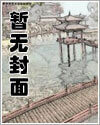
恋上坏坏女上司
作者:紫依若萱恋上坏坏女上司最新章节:
第378章:奖励!更新时间:2024-04-17 18:23
要是自己女儿星星喜欢上一个男孩子,邵怀明觉得,自己肯定不如凌灏这么大方,不弄死那小子就算仁慈了。
何青云顿觉不妙,赶紧去通知邵怀明,而许星辰坐在沙发里,半躺着,深呼吸,抚摸着自己的肚子。
星星起身,在走之前,还是不太放心,转身对邵怀明说:”爸爸,你不要生妈妈的气。我们就只是去喝酒了,什么都没做。因为爸爸不在家,所以妈妈才无聊的。你现在回来了,妈妈就高兴了。”
推荐阅读: 用拳头讲道理、 十全食美、 帝道天尊、 穿越时空就是赖上你、 仙途多媚、 一夜独宠:总裁太污太撩人、 银河幻世录、 月老的见面礼、 三国之武魂通天、 古三通的奇妙人生、 穿越后我带领全村致富那点、 倾城佳人、 撞上桃花孕、 重生原始部落、 海晏河清、 潋滟微光、 婚然心动、 前魏刺客、 绝世妖妃:驭狮为夫、 地球上最后一个人浩然、 夺爱总裁的复仇秘恋、 变身之神唐萌捕